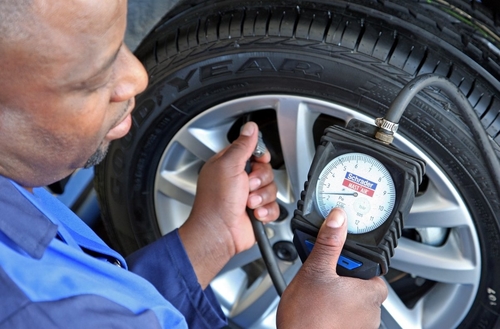1. Prepare yourself and your car with the required equipment
Make sure you are parked in a safe spot away from traffic. Apply the handbrake, turn off the engine and put your hazard lights on. Consult your vehicle handbook for any specific instructions for your car and put on your protective clothing. Now, get all of your equipment ready, place your warning triangle in a suitable spot and put your wheel chocks in place behind or in front of the inflated tyres.
2. Loosen the wheel nuts
Before lifting your vehicle with the jack, you should loosen the wheel nuts slightly while the flat tyre is fixed to the ground. If your car has locking wheel nuts, you’ll need to start with the locking key. Next, use your wrench to loosen the nuts by turning in an anti-clockwise direction. Once you’ve loosened them slightly, stop and prepare to lift your vehicle with the jack.
3. Lift your vehicle with the jack
Your vehicle handbook will indicate where to line up your jack to avoid any damage to the car so double-check before proceeding. Line up your jack with the jacking point and make sure it remains straight and stable throughout the jacking process. If it looks unstable at any point, lower and start again. Wind the jack carefully until you have enough room to remove the flat tyre easily.










